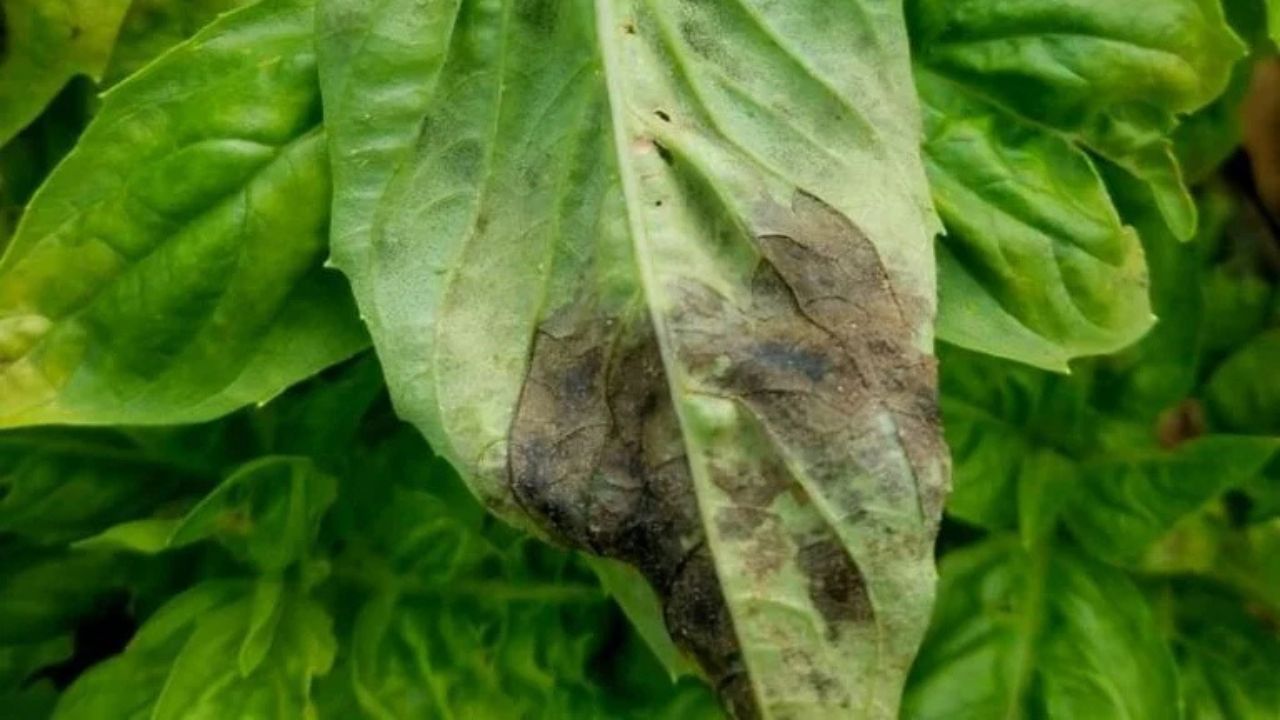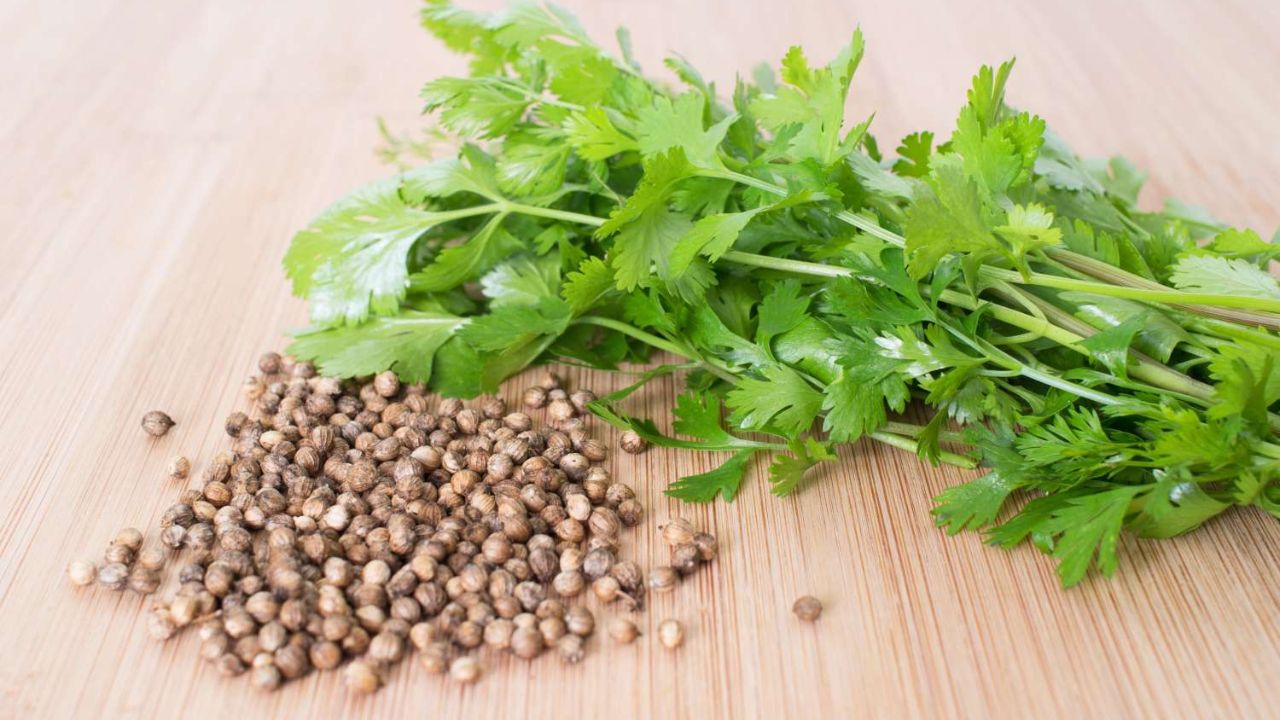Basil leaves turning brown can be caused by overwatering, underwatering, poor drainage, excessive sun exposure, or pest infestations. Each issue presents unique symptoms like yellowing, wilting, or dry patches. This article covers the common causes and offers simple solutions to help restore your basil plant’s health.
Why is My Basil Plant Turning Brown
If your basil plant is turning brown, it is a sign that something is affecting its health. Basil is a sensitive herb, and various factors such as improper watering, poor soil drainage, excessive sunlight, or pest infestations can cause its leaves to lose their vibrant green color and turn brown.
Understanding the root cause is essential to restoring the plant’s health. By paying attention to the symptoms and addressing the specific issue, you can help your basil thrive and avoid further damage. Proper care and attention to its needs will ensure your basil plant stays healthy and productive.
Overwatering: A Common Cause of Brown Basil Leaves
Symptoms of Overwatering
One of the most common reasons for basil leaves turning brown is overwatering. When basil plants receive too much water, their roots become waterlogged, which prevents proper oxygen flow. This leads to symptoms such as yellowing or wilting leaves, a strong musty odor from the soil, and soggy or overly damp soil. If you notice these signs, your basil may be suffering from excessive moisture.
Solution: How to Fix Overwatering
To prevent overwatering, start by ensuring your basil is planted in well-draining soil. Basil requires soil that drains excess water efficiently to keep roots healthy. It’s also essential to use pots with drainage holes, which help prevent water from pooling at the bottom.
When watering, allow the soil to dry out slightly between waterings. Basil plants thrive when watered thoroughly but infrequently—aim to water only when the top inch of the soil feels dry to the touch.
Avoid watering too often, especially if the plant is indoors or during cooler months when the soil retains moisture longer. By adjusting your watering habits, you can keep your basil healthy and avoid the browning caused by overwatering.
Underwatering: A Key Factor Behind Brown Basil Leaves
Symptoms of Underwatering
Underwatering is another common issue that can cause basil leaves to turn brown. When basil doesn’t receive enough water, it struggles to maintain its health, leading to the following symptoms:
- Dry, crispy leaves that may curl or become brittle.
- Soil that is dry to the touch, often compacted.
- Stunted growth or a drooping appearance.
If you notice these signs, your basil may not be getting enough moisture.
Solution: How to Fix Underwatering
To remedy underwatering and keep your basil healthy, follow these steps:
- Water Regularly: Ensure your basil plant is watered regularly, especially during warm weather. Water it thoroughly, allowing water to reach the roots.
- Check Soil Moisture: Before watering, check the soil moisture by sticking your finger about an inch into the soil. If it feels dry, it’s time to water.
- Adjust Watering Frequency: During hot or dry periods, basil may need more frequent watering. However, make sure not to let the soil stay soggy.
Poor Drainage: How It Contributes to Brown Basil Leaves
Symptoms of Poor Drainage
When your basil plant suffers from poor drainage, it can lead to root rot and other issues that cause the leaves to turn brown. Here are the common symptoms of poor drainage:
- Brown spots on leaves, often starting at the edges.
- Wilting despite adequate watering, indicating waterlogged roots.
- Soggy, wet soil that remains damp for extended periods.
These signs usually indicate that the soil is retaining too much moisture and is not draining properly.
Solution: How to Improve Drainage
To prevent poor drainage and help your basil thrive, follow these solutions:
- Use pots with drainage holes: Ensure your pots have adequate drainage holes at the bottom to allow excess water to escape.
- Improve soil drainage: Opt for well-draining soil, such as a mix that includes perlite or sand, to promote proper water flow.
- Avoid overwatering: Even with improved drainage, make sure not to overwater. Water basil only when the soil feels dry to the touch.
Excessive Sun Exposure: The Effect on Basil Leaves
Symptoms of Excessive Sun Exposure
Basil plants thrive in sunny conditions, but too much direct sunlight can cause stress and damage. When exposed to excessive sun, basil leaves may show the following symptoms:
- Brown, dry patches that start at the tips and edges of the leaves.
- Leaves that appear scorched or crispy, particularly during the hottest parts of the day.
- Wilting, despite regular watering.
These signs suggest that your basil is experiencing sunburn or heat stress.
Solution: How to Protect Your Basil from Excessive Sun
To prevent excessive sun exposure from damaging your basil, consider the following solutions:
- Provide partial shade: Basil prefers full sun, but it can benefit from some shade during the hottest part of the day (usually between 12 PM and 3 PM).
- Move the plant: If your basil is in a pot, move it to an area with indirect sunlight or light afternoon shade. For outdoor plants, consider relocating them to a spot with some protection from harsh midday sun.
Pest Infestations: How They Affect Basil Health
Symptoms of Pest Infestations
Pests can be a major cause of basil plant damage, often leading to discolored or damaged leaves. Common signs of pest infestations include:
- Discolored leaves, which may turn yellow or brown.
- Holes or bite marks on the leaves, especially along the edges.
- Sticky residue or visible insects on the leaves or stems.
If you notice any of these symptoms, your basil may be under attack by pests like aphids, spider mites, or whiteflies.
Solution: How to Manage Pest Infestations
To keep pests at bay and protect your basil, follow these steps:
- Inspect regularly: Check the undersides of leaves and stems for pests. Early detection is key.
- Treat with organic insecticide: Use natural solutions like neem oil or insecticidal soap to safely eliminate pests without harming your plant.
- Remove pests manually: For small infestations, gently wipe pests off with a damp cloth or spray them with water.
Related Questions People Often Ask:
Why Are The Leaves of My Basil Plant Turning Brown?
Brown basil leaves can result from overwatering, underwatering, poor drainage, excessive sun exposure, or pest infestations. Identifying the specific cause and adjusting your care routine can help restore your plant’s health.
How Can I Tell if My Basil is Being Overwatered?
Overwatering typically causes yellowing or wilting leaves, soggy soil, and a musty odor. Ensure the soil drains well, and allow it to dry slightly between waterings to prevent overwatering.
Can Too Much Sun Harm My Basil Plant?
Yes, excessive sun exposure can cause basil leaves to become brown and dry, especially during the hottest part of the day. Providing partial shade or moving the plant to a spot with indirect sunlight can protect it from sunburn.
What Should I Do if I Find Pests on My Basil Plant?
Inspect your basil regularly for pests like aphids or spider mites. If you find them, treat the plant with organic insecticides like neem oil or insecticidal soap, or remove pests manually with a damp cloth.
Overall Reflection
In conclusion, brown basil leaves are typically caused by overwatering, underwatering, poor drainage, excessive sun, or pests. By identifying the issue and adjusting care accordingly, you can restore your plant’s health and prevent further browning.




